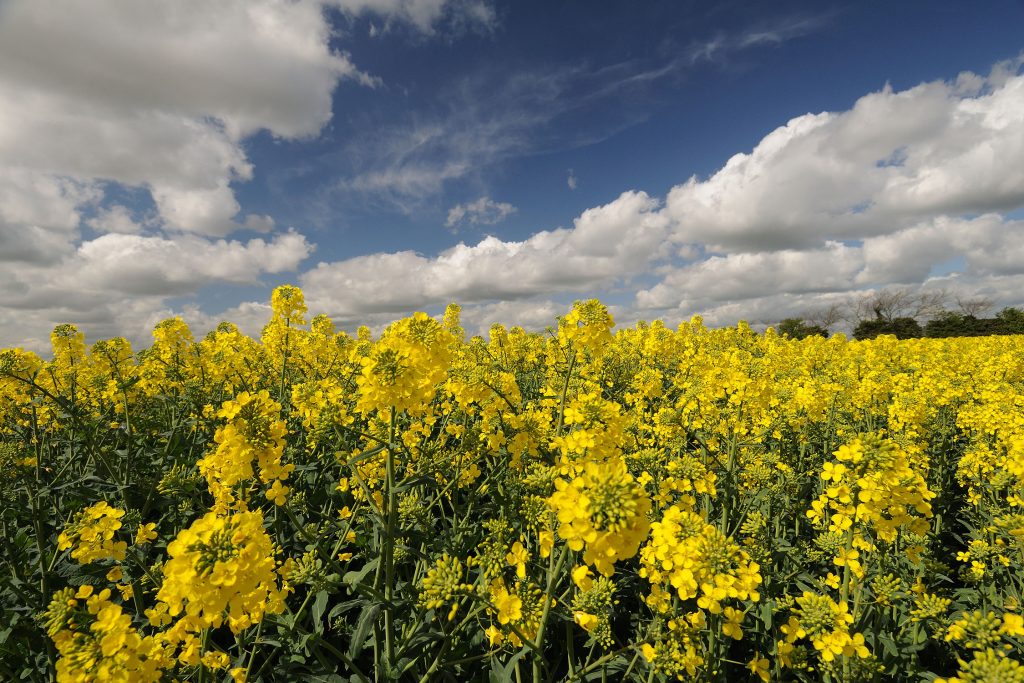Regional split for 2017 OSR area
10th March 2017
The English area of oilseed rape, as at 1 December 2016, is estimated at 538Kha. This is 1% lower than the total (winter and spring) harvested area in 2016 (543Kha), reports AHDB.
The English area of oilseed rape, as at 1 December 2016, is estimated at 538Kha. This is 1% lower than the total (winter and spring) harvested area in 2016 (543Kha). Unless we see an increase in the spring area, or a rise in abandonment levels, we could be looking at a similar area to last harvest, reports AHDB.
Compared with last December’s survey, there is a more pronounced regional split in oilseed rape plantings across the country. Large decreases were estimated in the East and North East, whereas other areas have increased plantings of the oilseed.
AHDB Market Analyst Isobel Robinson said: “This shift away from oilseed rape in the East is likely due to production pressures, including the potential risk from cabbage stem flea beetle (CSFB) damage.”
In other regions, however, oilseed rape still seems to remain the break crop of choice, with higher prices at the time of planting perhaps giving a boost to areas. For example, the South West region saw 11% rise in oilseed rape plantings.
The overall picture
AHDB’s Winter Planting Survey estimates the area of wheat and winter barley plus oilseed rape and oats in England at 2.59Mha as at 1 December 2016, of which:
- Wheat 1.59Mha
- Oilseed rape 538Kha
- Winter barley 369Kha
- Oats 95Kha
The area of these four crops is estimated to be broadly unchanged from 2016 harvested area.
Isobel added: “In recent years we have seen increased interest in cultural controls for weeds and disease, particularly black-grass, which has contributed to a rise in spring cropping. In addition, market conditions continue to challenge the economics of the whole rotation.”
Wheat
At 1.61Mha, the wheat area in England and Wales is 5% lower than the total wheat area harvested in 2016. It is very similar to the 1.66Mha reported in last year’s winter planting survey – the area as at 1 December 2015.
Overall, wheat still remains the main crop for the majority of rotations across the country. However, anecdotal comments have suggested growers are starting to consider longer rotations for cultural control for weeds and disease. This could mean other crops such as spring wheat are included in rotations for example.
Winter barley
At 377Kha, the English and Welsh winter barley area is an estimated 2% smaller than the 384Kha harvested in 2016. The winter barley area for England and Wales is the lowest area since 2014 when the area was 370Kha. This could again be highlighting the greater trend towards spring cropping, as the drop in the winter barley area could increase the land available for spring crops. Furthermore, economic factors could also have contributed as feed barley prices have been struggling this season relative to feed wheat.
Oats
The oat area in England is estimated at 95Kha as at 1 December 2016, down 8% from the total English 2016 harvested area (which includes both spring and winter oats). However, compared to 1 December 2015, the area as at 1 December 2016 is quite considerably larger (19Kha).
An oat area of 95Kha, even before spring plantings, is quite high although not unprecedented. In 2013/14, the total oat area in England reached 138Kha. Whether the area for the 2017/18 season reaches these levels again is likely to be determined by the area of spring oats planted. The total UK oat area will also be influenced by the Scottish oat area. The results from the Scottish government on winter plantings are due to be released on 16 March.
The oat area is relatively small in comparison to those for other crops and therefore, estimations should be treated with additional caution.

